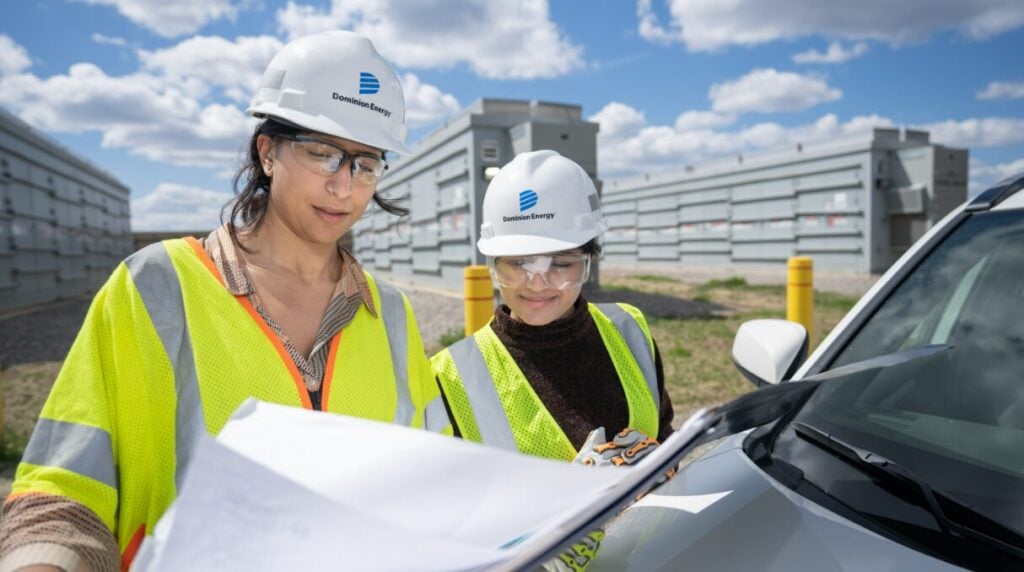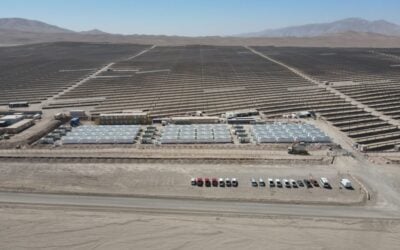
Regulated utility Dominion Energy last week received the green light from local officials to develop a 100MW/400MWh BESS in Fauquier County, Virginia.
Fauquier County’s Board of Supervisors (BoS) approved a special exception for the project at its most recent September meeting, after previously postponing its final decision due to concerns expressed surrounding fire safety.
The area that will host the utility-owned battery energy storage system (BESS) has been targeted by developers in recent times, with several proposals for adjacent data centers currently under consideration.
Remington BESS, nestled in data center alley
The so-called Remington BESS facility will comprise 174 individual storage enclosures located on the outskirts of Remington encompassing approximately 72 acres of land, adjacent to a solar facility and fossil gas that are both owned by Dominion.
Try Premium for just $1
- Full premium access for the first month at only $1
- Converts to an annual rate after 30 days unless cancelled
- Cancel anytime during the trial period
Premium Benefits
- Expert industry analysis and interviews
- Digital access to PV Tech Power journal
- Exclusive event discounts
Or get the full Premium subscription right away
Or continue reading this article for free
The project will form part of PJM Interconnection’s electricity grid, with connection achieved via pre-existing 230kV infrastructure present on the site. Under the terms of the special exception, Dominion has two years to deliver on the project.
Also proposed near Dominion’s Remington BESS are four huge data center campuses. Although only one of these has so far been approved by local officials, Northern Virginia is home to one of the world’s largest densities of data centers, with some referring to this area as “data center alley.”
Although Dominion is proposing to develop several clean energy projects to serve this growing demand from data centers, it’s also proposing to continue burning fossil fuels well into the next decade.
As outlined within its most recent resource plan, Dominion plans to continue operating its fossil fuel fleet until 2039 in order to meet expected demand. The utility has also not addressed how it intends to become emissions free by 2045, as required under Virginia State Law.
Alongside extending the life of its current fossil fuel plants, Dominion is seeking approval from the State Corporation Commission (SCC) to build a new 1,000MW fossil gas plant in Chesterfield County, Virginia.
The regulatory case is only in its early stages, however, the plans have already drawn widespread criticism from all corners of society due to the project’s highly polluting nature.
Collaboration with local officials
Despite the County’s Planning Commission recommending approval of the project, the BoS deferred Dominion’s application during its August meeting in order to further evaluate the risks surrounding potential BESS fires.
After the August meeting, several local officials and representatives from the local fire department met with Dominion staff at the utility’s operational 20MW/80MWh Dry Bridge Energy Storage located in Midlothian, Virginia.
Early development of the Dry Bridge project, which happens to be Dominion’s largest operational BESS, was completed by East Point Energy who sold the project as part of a utility-administered RFP.
As stipulated within the special exception for Remington BESS, Dominion is required to operate the facility in accordance with several internationally recognised codes and standards.
This includes those created by the National Fire Protection Association (NFPA), who this week released its hotly-anticipated 2026 edition of its 855 Standard for the Installation of Stationary Energy Storage Systems.
Additionally, each battery container at the Remington site will be spaced at least 25-feet apart, which exceeds the requirements of NFPA 855. Dominion will also reimburse any expenses incurred by local fire personnel in the event of a fire at the site.
During the recent BoS meeting, Senior County Planner Kara Marshall said they “received extensive knowledge about how all of these fire safety protocols are put in place” during the site visit.
Unusually, no one was present to speak during the public hearing portion of the meeting, which was swiftly followed by the BoS’ unanimous approval of the project.


![burns and mcdonnell GA_Battery_Storage_003[84] The maturing industry has allowed EPCs to "get more creative with engineering technology and construction equipment to help streamline operations in the field," Julian Hoover says. Image: Burns & McDonnell](https://www.energy-storage.news/wp-content/uploads/elementor/thumbs/burns-and-mcdonnell-GA_Battery_Storage_00384-rgklnp65oz5okwj4j525f5bdz9y57j338jh6zpqdvo.jpg)


